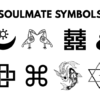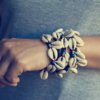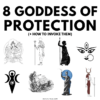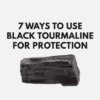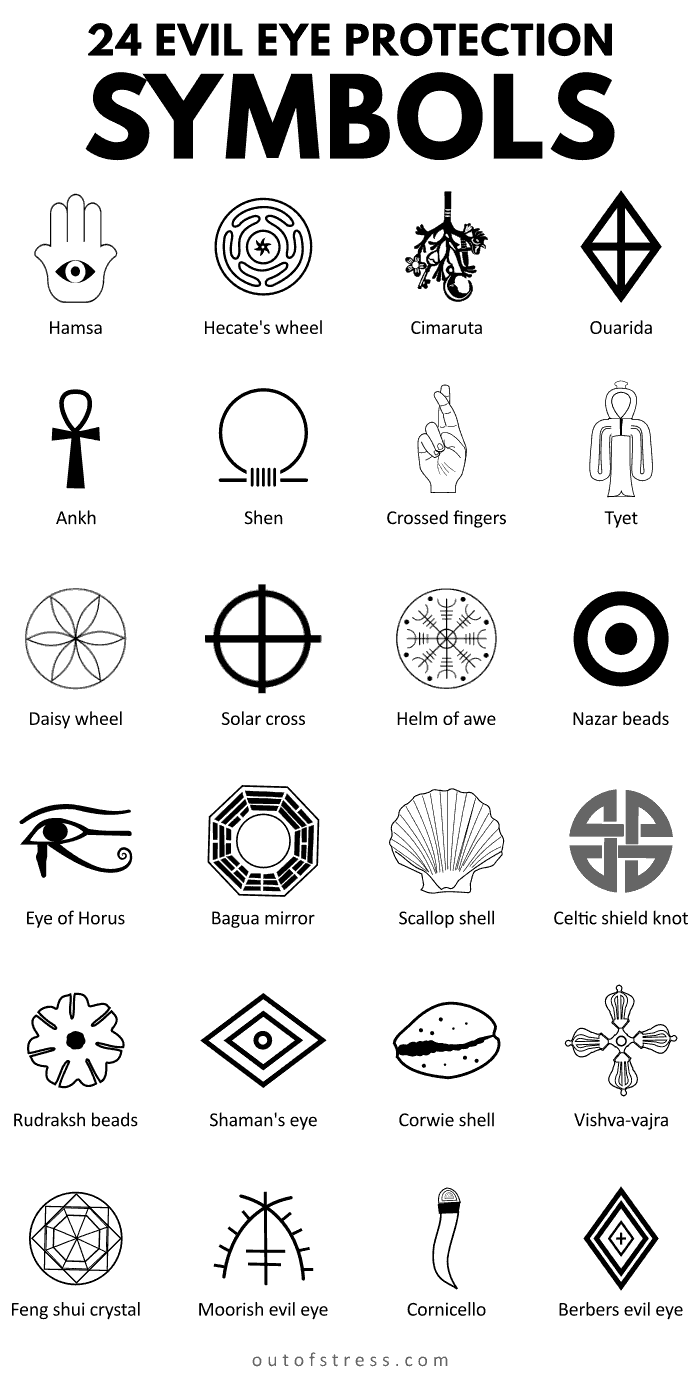
The curse of the evil eye is one of the oldest and most widespread beliefs in the world. Dating back over 3,000 years, nearly every culture on the planet has some variance of this concept. But what exactly is the evil eye? At its core, this destructive glance stems from malice and envy. It is a dark look, hex, or other magic spell which one person can cast upon another knowingly or unknowingly. Once the evil eye has been cast, it might have a far-reaching physical and spiritual effect depending on how receptive one is to this energy.
To put it in simple words, when someone thinks ill of you, their negative energy might impact your own energy causing you to attract some form of negativity into your life, like for instance, anger, depression, or even ill health. But worry not, because there are many easy ways to protect your energy from the evil eye.
In this article, we will look at ancient symbols that have been devised to ward off the evil eye as well as offer protection. Many of these symbols are beautiful as they are mysterious. We’ll discover the deep meaning behind them, and how you can use them in your own life for protection.
25 Evil eye protection symbols
1. Helm of Awe

The Helm of Awe is an incredibly powerful symbol in Norse culture and mythology. Known as Ægishjálmr in Old Norse, the Helm of Awe resembles a great wheel with eight legs extending from a single point. A sign of protection with many magical properties, the Helm was often worn by Viking warriors to help them defeat enemies on the battlefield. It was drawn on the forehead, acting like a third eye for the warrior to see through.
The Helm helped in offensive battle strategies by bringing clarity, promoting bravery, and deflecting curses from the opposition. It also protected the wearer against abusing his own power, lest he becomes the very thing he sought to defeat. The Helm was not only used by warriors, but also by those who believed that they had been cursed by the evil eye in some way.
2. Eye of Horus
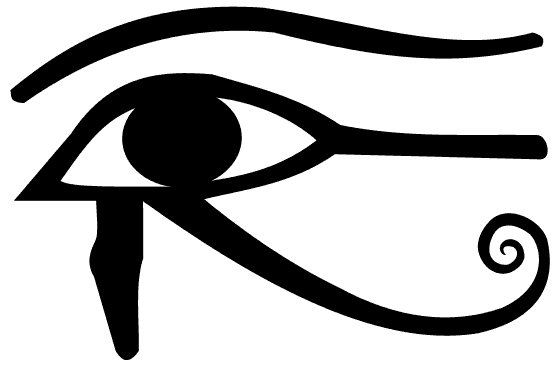
The Eye of Horus is a beautiful ancient Egyptian symbol. Also known as the Wedjat or Udjat Eye, this symbol tells a profound story of healing and protection. According to Egyptian mythology, the gods Horus and Set were in battle for the highest position in the pantheon after the former king Osiris died. Set tore out Horus’ eye in the conflict, but the eye was healed by goddess Isis.
Horus then offered his eye to Osiris, and this energy sustained him and allowed him to flourish in the afterlife. The Eye of Horus became known as a symbol of protection, healing, and sacrifice. It features prominently in Egyptian art, and it is believed that whoever wears the symbol will be protected and saved from the evil eye much like Osiris was saved in the myth.
3. Tiger Eye Stone
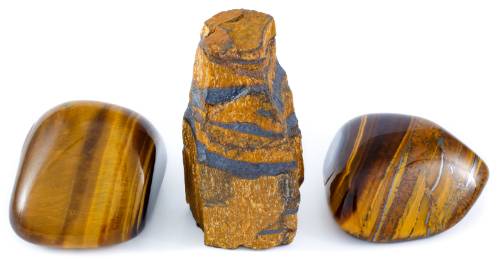
You’ve probably seen tiger eye before. With an unmistakable hue, this lustrous gold-black stone is a particularly useful type of quartz. Tiger eye is transformative and active in nature. It has the power to change negative intentions to positive ones, absorbing the darkness of the evil eye and releasing it back as beneficial energy.
Tiger eye both protects the wearer and infuses them with strength and perseverance, allowing them to navigate through the world unscathed. Ancient Roman soldiers wore Tiger Eye into battle for good luck and protection against enemy curses while at war. The Aztecs would hang it around their homes or make jewelry from it, confident that adorning themselves with Tiger Eye would keep them safe wherever they went.
4. Nazar Beads
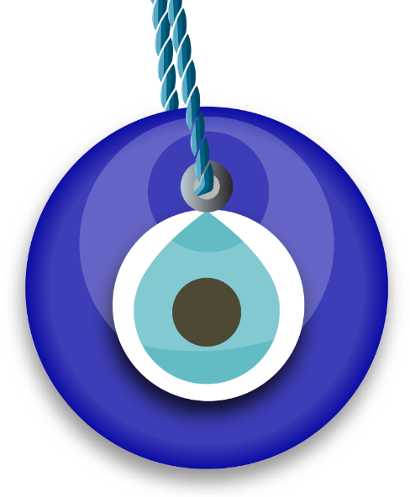
Nazar beads are small but mighty blue glass beads commonly worn across the Mediterranean and Middle East. Known in Turkey as a Nazar Boncuk charm and as Mati in Greece, these little beads originated in ancient Anatolia and have been used across the general region for thousands of years. The word Nazar itself derives from the Arabic word for sight or vision, and the beads protect the wearer from all forms of the evil eye he or she may encounter in day-to-day life.
The evil eye can come to anyone at any time, regardless of guilt or innocence. When someone is complimented often or has a run of especially good luck, even well-intentioned people can get jealous and accidentally cast the evil eye. Because it is so prevalent, many people believe that Nazar beads should be worn by everyone, especially children. Wearing them as jewelry or even simply putting one in your pocket is a great insurance policy against those dark glances.
5. Black Thread
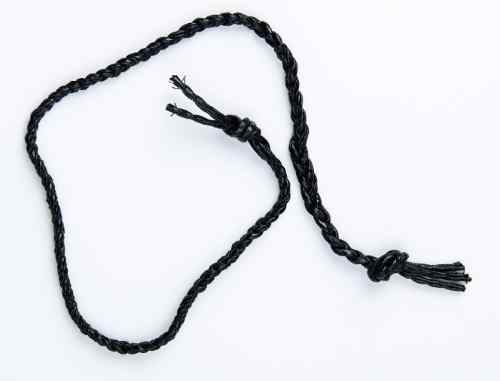
In India and other areas where Hinduism is largely practiced, it’s common to see people wearing black thread around their ankle (or wrist). While it may be pretty, this adornment isn’t just for decoration—it’s an easy, effective, and common way to protect yourself against the evil eye. Known as ‘Buri Nazar’ in Indian households, the evil eye is an ever-present danger. But according to Hindu astrological beliefs, it’s easy enough to thwart.
Women should wear the thread on their left leg (or wrist) while men should tie it to their right leg (or wrist). The thread works by calling on the power of the planet Saturn, or Shani, whose color is black like the thread. When a person dons the thread, they call on Shani to protect them. Shani will deflect any curses or other ill effects of the evil eye. As an added bonus, the god may even bring additional good luck to the wearer in the form of financial gain or relief from sickness.
6. Crossed Fingers
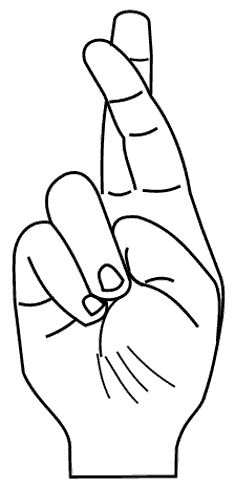
Have you ever heard the phrase, “keep your fingers crossed”? Crossing your middle finger over your index finger is a popular gesture to make before you find out important news, such as the results of a big exam or job interview. This is because of an ancient Christian belief in the power of the cross. Over time, the belief morphed into a superstition that God brings blessings to those who cross their fingers.
These blessings extend to anyone who is at risk for bad luck or curses. Crossed fingers can even be considered a plea for divine protection when entering a hairy situation, or simply a call for protection against the evil eye in general. This is why we cross our fingers before we lie—lying is a negative action that brings bad luck. By crossing the fingers, we can “cancel out” the bad energy we create with the lie and deflect any attention we may draw from the evil eye.
7. Bagua Mirror
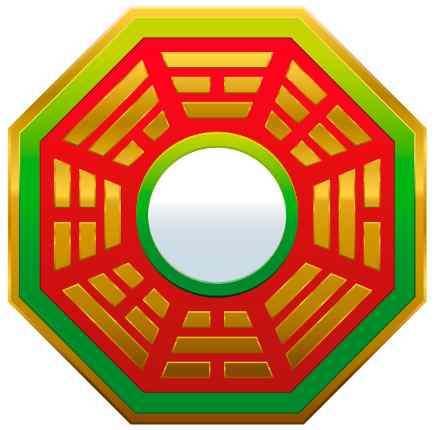
The Bagua mirror is a Chinese Feng-Shui concept. It is a round mirror with convex glass which is placed outside the home to ward off “poison arrows”. The term “poison arrows” can be synonymous with the evil eye, referring to malicious intentions from outsiders. However, it can also mean negative Chi in general, like the kind that comes from misaligned architecture or dark places.
The mirror can be placed outside of any building in need of protection. Rather than simply protecting a single person, the mirror guards all the people inside and honors the spirit and intention of the building. It absorbs the bad energy, diffusing it in a positive way. However, the Bagua Mirror is not for every dwelling or business. To use it properly, there must be a specific reason—otherwise, you may attract bad energy to the mirror which wasn’t there to begin with.
8. Hamsa
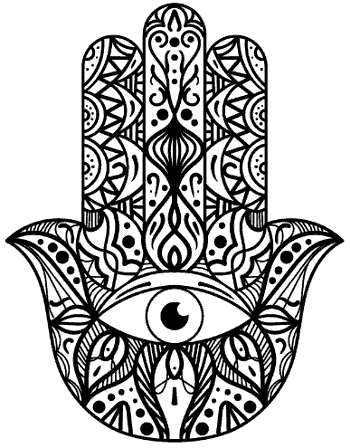
Known as the Hand of Fatima for Muslims and the Hand of Miriam in Jewish practice, the Hamsa is a beautiful and intricate symbol. It is drawn as a hand without a little finger, instead featuring two opposing thumbs on either side. In every culture which uses it, the Hamsa is a symbol of guidance and protection. You’ll often see it depicted with an eye at its center, representing god’s eye. The wearer may hold it up in times of danger to call for divine protection, physically warding off the evil eye when threatened.
The Hamsa can be carried as a talisman or worn as a piece of jewelry. It is also commonly featured in artwork and hung in the home to protect the entire household against the evil eye. Sephardic Jewish brides often wear a Hamsa on their wedding day to ward off curses which may come from well-intentioned but jealous friends. Much like the Nordic Helm of Awe, the Hamsa has a doubly-protective feature—it helps the wearer dispel negative thoughts or emotions coming from within, helping him or her walk closer in the path of the divine.
9. Cornicello
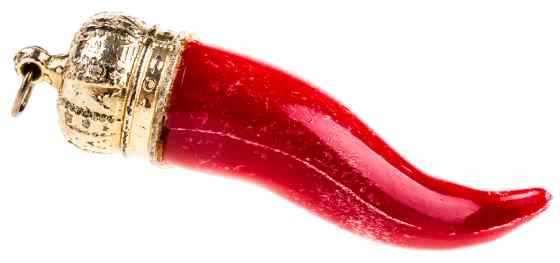
In Italian, the evil eye is known as Malocchio or “bad look”. Envious or jealous people are the most likely to cast this bad look, so some people will choose to protect themselves with humility and privacy. But even if you never boast about your achievements, the bad look can come anyway. To further protect themselves against it, many Italians use a Cornicello.
Also known as a Cornetto or Italian Horn, the Cornicello is a horn-shaped charm that can dispel negative energies which come from jealousy. It is often made of red coral or painted red, a color that naturally wards off the evil eye. You can wear a Cornicello charm, hang one on your rearview mirror, or place one anywhere in your house to fortify against the evil eye. As an added bonus, the Cornicello is said to promote fertility, virility, and masculine strength.
10. Seven-Knotted Red String
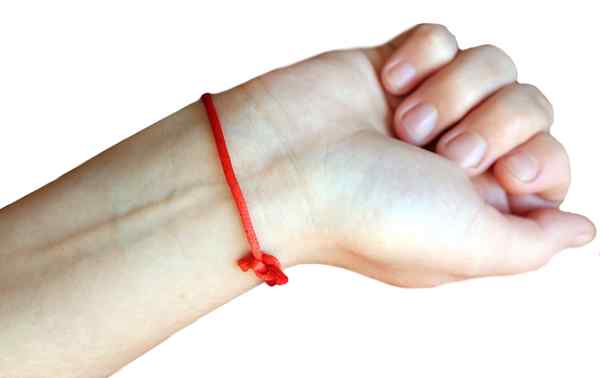
Wearing a red string bracelet with seven knots is a powerful symbol of good luck and protection among Kabbalistic Jews. Red is a color of vitality and blood, the life-force which gives us strength. Jews also believe that red is the color of divine judgement. The seven knots may represent many things, including the seven days of creation and the seven days of the week.
Jews wear the red string bracelet on their left hand. It is believed that the left side is the receiving side of the body, where one may connect more fully with spirituality and the divine. To don the bracelet successfully, you would need to recite a prayer and have a close friend or relative tie it for you. Interestingly enough, Buddhists also use a similar bracelet which represents universal connection. Many people in Mexico wear the red bracelet, and it is popular across Asia as well. No matter where you’re located, the red bracelet remains a symbol of protection against the evil eye.
11. Cowrie Shells
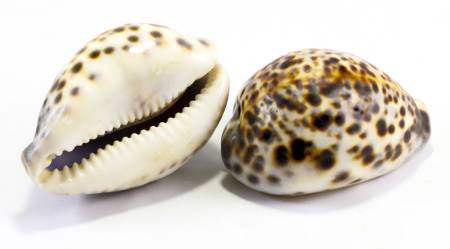
Cowrie shells are unmistakable. These tiny yet beautiful seashells are one of the most ancient forms of currency, widely used in West Africa and later on in the Caribbean. Cowrie shells are so valuable because they are believed to be possessed by the benevolent spirit of the ocean-goddess Yemaya. She can protect the owner from any dangers he or she may face, including the evil eye.
Cowrie shells are not strictly feminine, but they are often worn by women. Since Yemaya is a mother-goddess, women often call upon her while pregnant or hoping to become pregnant. Many women wear the shells to adorn the hair. They are used to make jewelry like bracelets, anklets, and necklaces. The practice of wearing cowrie shells is also said to bring wealth, good luck, and prosperity alongside protection.
12. Cimaruta
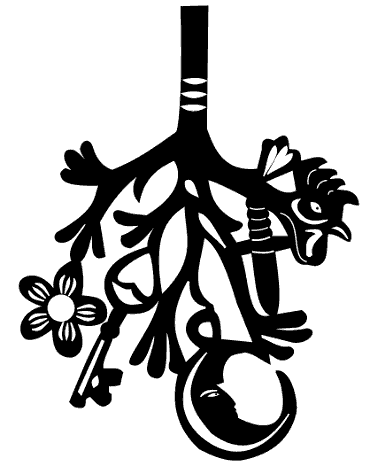
The Cimaruta is an Italian amulet traditionally worn as a pendant or hung in homes to protect against the evil eye. This protection amulet is made of silver and is shaped like a rue sprig. Why rue? This is because, in Italian magic and folklore, rue was considered a sacred herb with magical/protective properties.
The amulet carries several smaller charms each considered to have powerful apotropaic (protective) properties. These typically include a key, a fish, an owl, a vervain blossom, a hand holding a sword, a crescent moon, a rooster, and an eagle. The Cimaruta is commonly associated with the southern Italian region of Puglia and is believed to have originated among the ancient Greeks.
13. Shaman’s eye
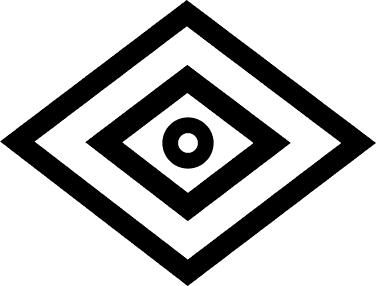
The Shaman’s eye (also known as the Eye of Medicine Man) is a Native American shamanic symbol that was believed to have powers to deflect negative energies and the evil eye. It was often worn as an amulet or talisman for this purpose.
This symbol is shaped like a diamond with the outer lines representing the 4 corners of the physical world, the inner lines representing the spirit world and the circle in the center representing the shaman’s eye. The eye is also said to symbolize the ability of the shaman to see beyond the physical world into the spiritual world. This is why, in addition to the protection, this symbol is also believed to give the wearer spiritual powers and help them connect with the divine.
14. Hecate’s wheel
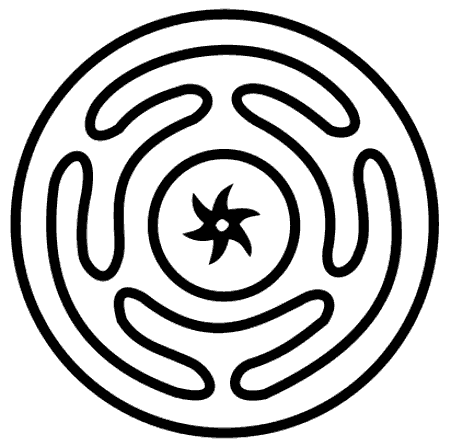
The Hecate wheel is a symbol associated with Greek goddess Hecate, who is revered as a protector, guardian and bringer of prosperity and abundance particularly to women and families. In addition to her role as a guardian, Hecate is also said to have the power to change the course of events and break spells.
Hecate’s wheel is often seen as a representation of Hecate’s protective and guiding influence, and is believed to have the ability to ward off negative energies and provide protection to those who carry or wear the symbol.
15. Ouarida evil eye symbol
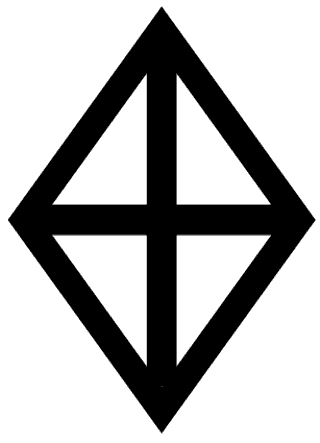
Ouarida is a diamond shaped symbol with a cross inside. It was used by the Berbers (an ethnic group indigenous to North Africa) as a powerful symbol to protect against the evil eye. The cross in the middle was believed to deflect evil eye in all four directions. This symbol was often painted on doors and worn as jewelry for protection and attracting good luck.
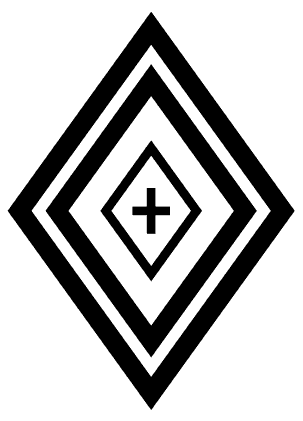
A variation of this symbol contains a smaller cross at the center (as shown in the image above). This variation is very similar to the Shaman’s eye symbol we saw earlier.
16. Rudraksha beads (Eye of Shiva)
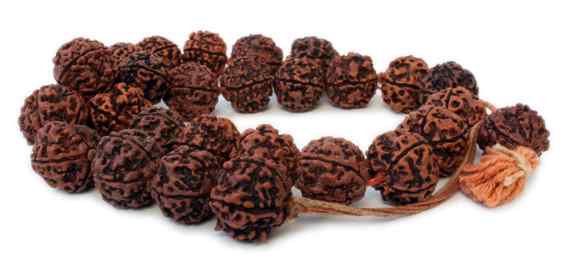
Rudraksha beads (named after Hindu God Shiva) are seeds of the Rudraksha tree (Elaeocarpus ganitrus). In Hinduism, these seeds are believed to offer spiritual and protective powers (against negative energies and evil eye) and are often worn as an amulet for this purpose. They are also used extensively in prayer and meditation.
The number of faces also known as ‘mukhis’ on a Rudraksha bead is believed to determine its specific properties and powers, with certain beads considered more powerful than others. Beads can have anywhere from 1 to 21 mukhis. Even though all types of Rudrasha are good for protection, the 8 mukhi Rudraksha is said to offer the maximum protection against evil energies.
17. Evil eye mandala
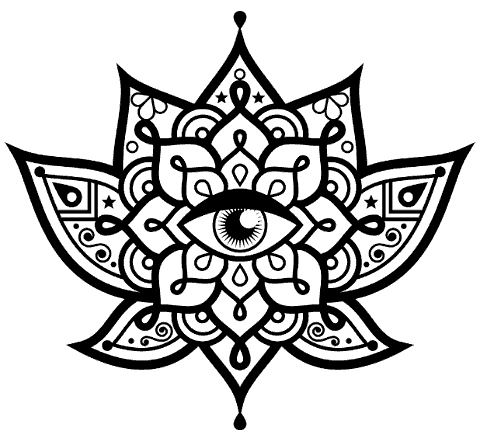
The Evil eye mandala is a circular design that is often used as a talisman or amulet to ward off the evil eye. It is depicted with an eye in the center surrounded by intricate patterns or symbols. The Evil eye mandala is thought to bring good luck and protect against harm, and is often worn as an amulet or displayed in homes or businesses for protection.
18. Hexafoil/Daisy wheel
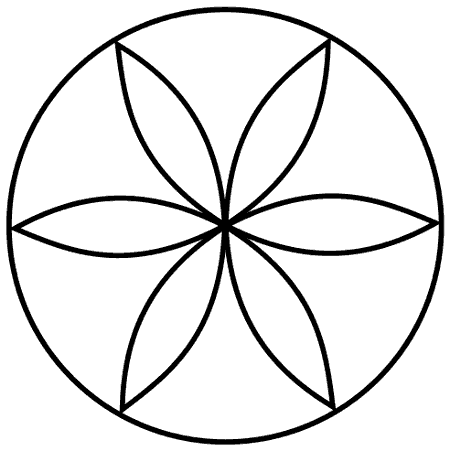
The hexafoil is a simple geometric symbol that resembles a flower. It is created by seven overlapping circles and has six equally sized biconvex shaped petals arranged in a circular pattern. Since ancient times, the hexafoil has been used in a variety of contexts, including as a symbol of protection to ward off evil energies and to bring good luck and positive energy.
19. Visvavajra
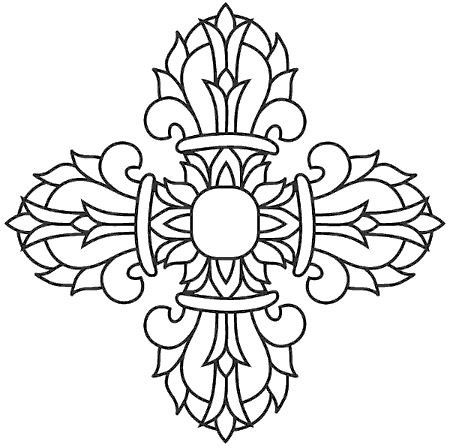
The Visva Vajra (thunderbolt scepter) is a symbol of spiritual protection in Buddhism. It is associated with the deity Vajrapani and is depicted as a scepter or staff with a double vajra (five-pronged ritual object) at each end. The Visva Vajra is believed to have the ability to purify negative energies and bring wisdom & blessings. Worn as an amulet, this symbol is said to dispel evil, temptation, deception, and ignorance and invite wisdom, boosting spiritual powers.
20. Scallop shell
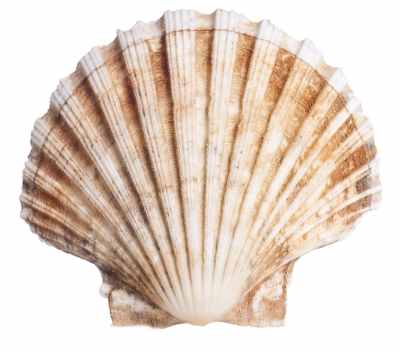
The scallop shell is a symbol that has been associated with protection and safe passage (via the seas) across various cultures for centuries. In ancient Rome, it was placed at entrances to homes and even worn as amulets to bring good luck and to ward off evil spirits. In Christianity, it is linked to the apostle James and is a symbol of protection, strength, courage and hope. It is often carried by pilgrims on their way to the Shrine of Saint James for protection & good luck. Today, the scallop shell is still used as a symbol of protection and is found on jewelry, home decor, and other decorative items.
21. Celtic shield knot
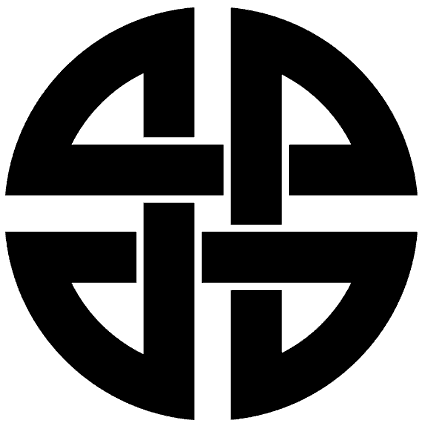
The Celtic shield knot as the name suggests is a symbol associated with protection, strength, and unity. In ancient Celtic culture, it was used to decorate warrior shields and was believed to provide protection in battle. It was even placed next to sick people to deflect evil spirits and promote healing.
22. Solar Cross
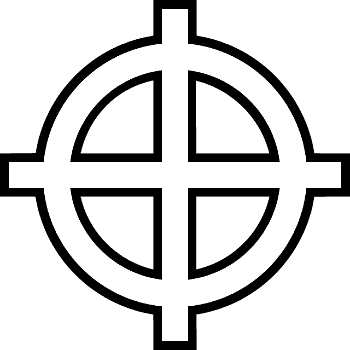
The solar cross (cross surrounded by a circle) is a sun symbol that has been associated with protection, strength, and good luck for centuries. It is a powerful symbol of the sun and its life-giving energy and is associated with many ancient sun gods such as the Egyptian god Ra. In Native American cultures, it is associated with the sun dance – a spiritual ceremony that is meant to bring blessings and protection.
23. Feng Shui crystal ball
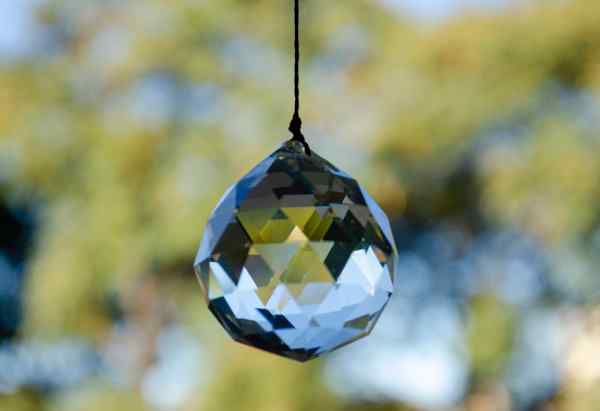
The Feng Shui crystal ball is a spherical crystal ball believed to have powers to deflect negative energies, enhance the flow of chi (life energy) and bring positivity and blessings to any space where it is used. Feng Shui crystal balls are typically made of clear quartz and can be small or large. They are often placed in a prominent location, such as on a desk or in the living room for protection from evil and attracting good energy.
24. The Ankh
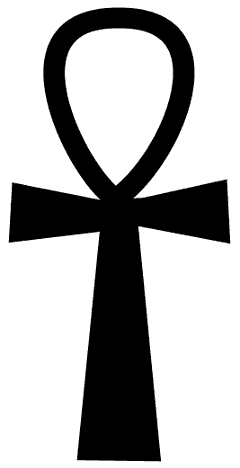
The ankh is an ancient Egyptian symbol that resembles a cross but has a loop at the top instead of a vertical bar. It also has similarities to another Egyptian symbol – The Tyet (or knot of Isis) that we saw earlier. This symbol represented eternal life and was believed to have magical powers of healing, attracting positive energy and repealing evil (including the evil eye). In ancient Egypt, the Ankh was used in magical ceremonies and was often depicted on amulets and other items as a way to invoke its protective powers and ward off negative energies.
25. Shen symbol
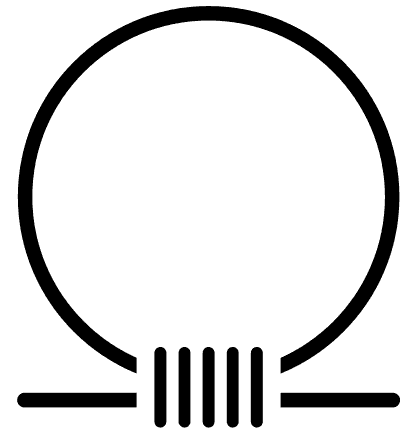
Another Egyptian symbol that is associated with protection against evil is the Shen (meaning to Encircle). Shen depicts a circle with a tangent line attached via a loop of rope to the bottom end of the circle. It represents eternal life and protection. The symbol was often associated with the gods and was believed to offer divine protection to the person who wore it. It was also used to represent the sun and the idea of completeness or wholeness.
Conclusion
Using symbols to protect yourself from the evil eye is a powerful and ancient practice. It can bring you strength when you feel weak, and peace of mind when you feel vulnerable. The most important thing is not which symbols you use, but the intention behind them. If you choose to adorn yourself, your home, or your possessions with protective art or talismans, consider why your chosen symbol calls to you and what you hope to achieve in using it. When you feel confident, go ahead and give yourself an extra boost of protection with your special symbol. Also, make sure to charge the symbol with your intention before using.



